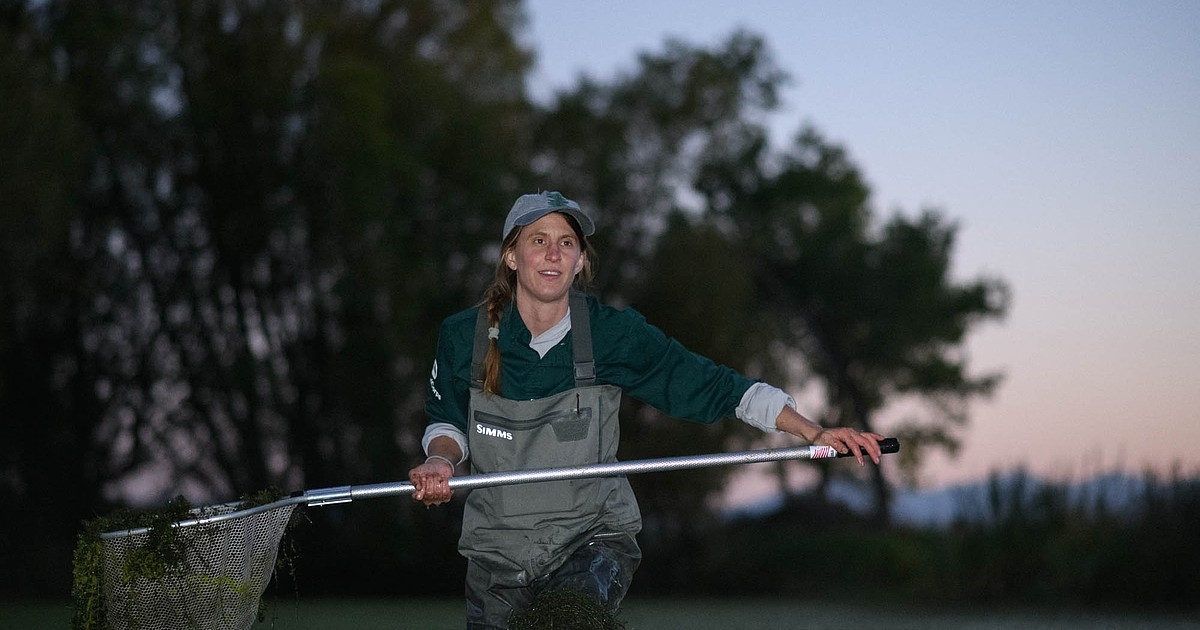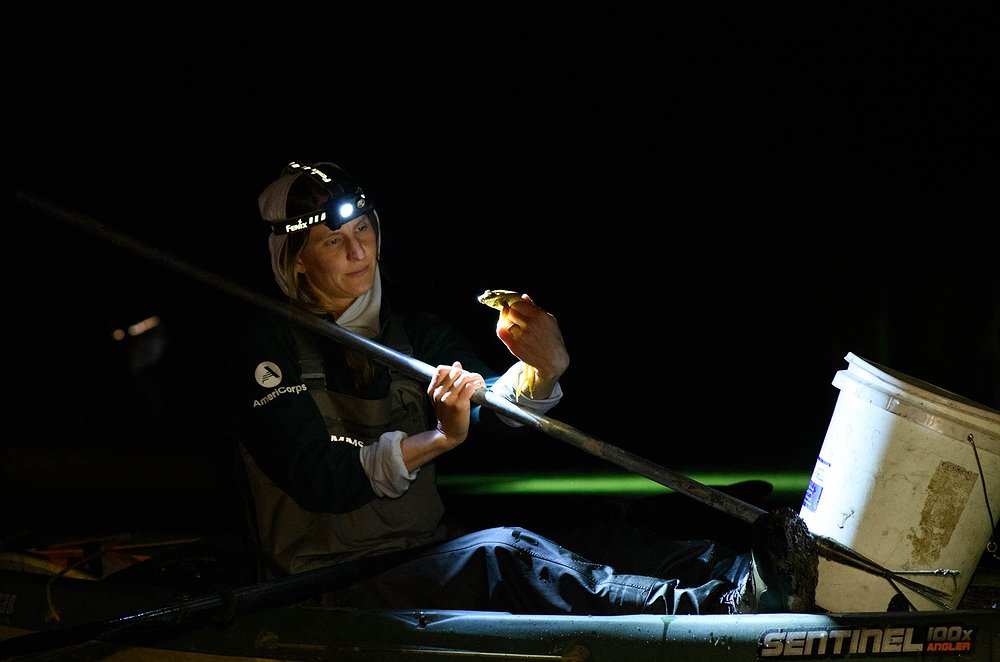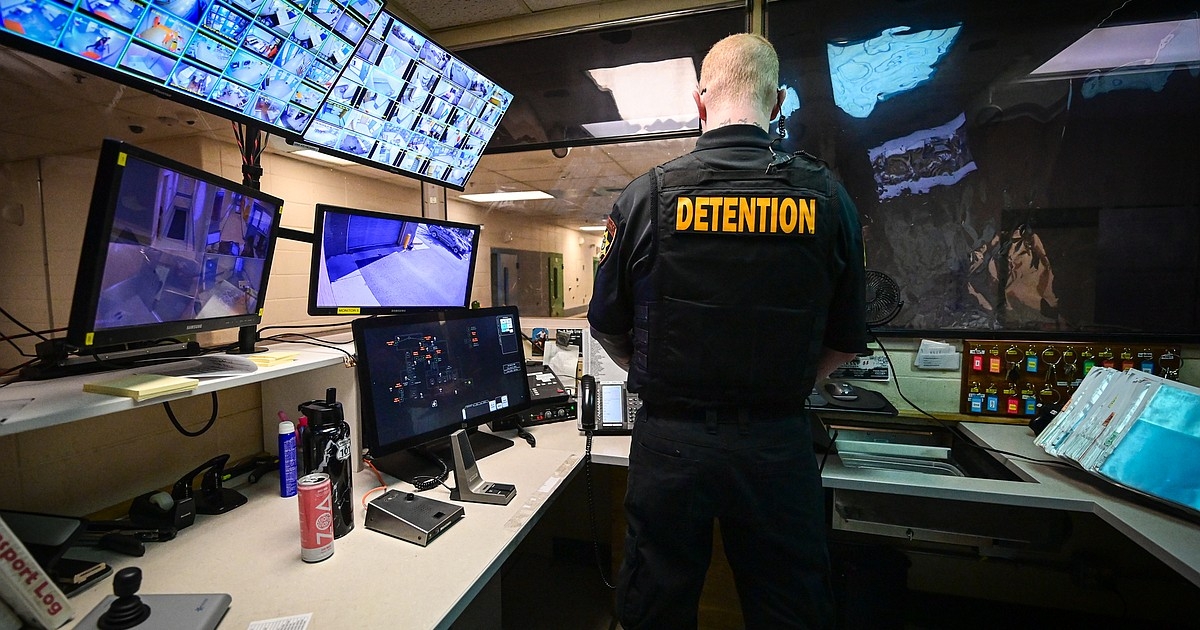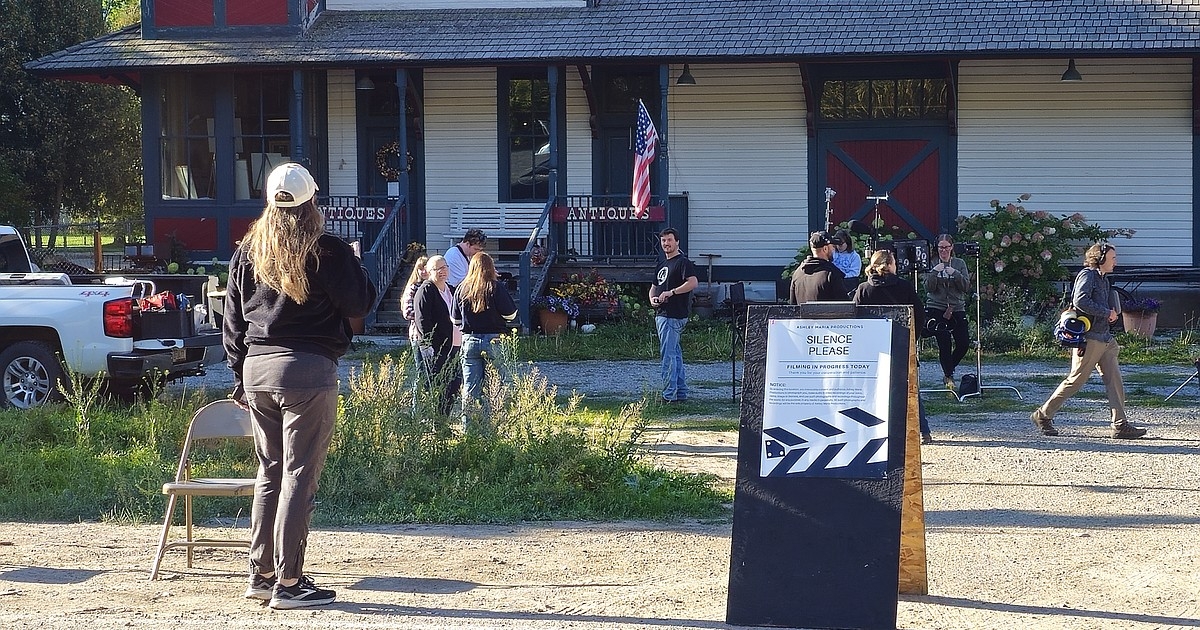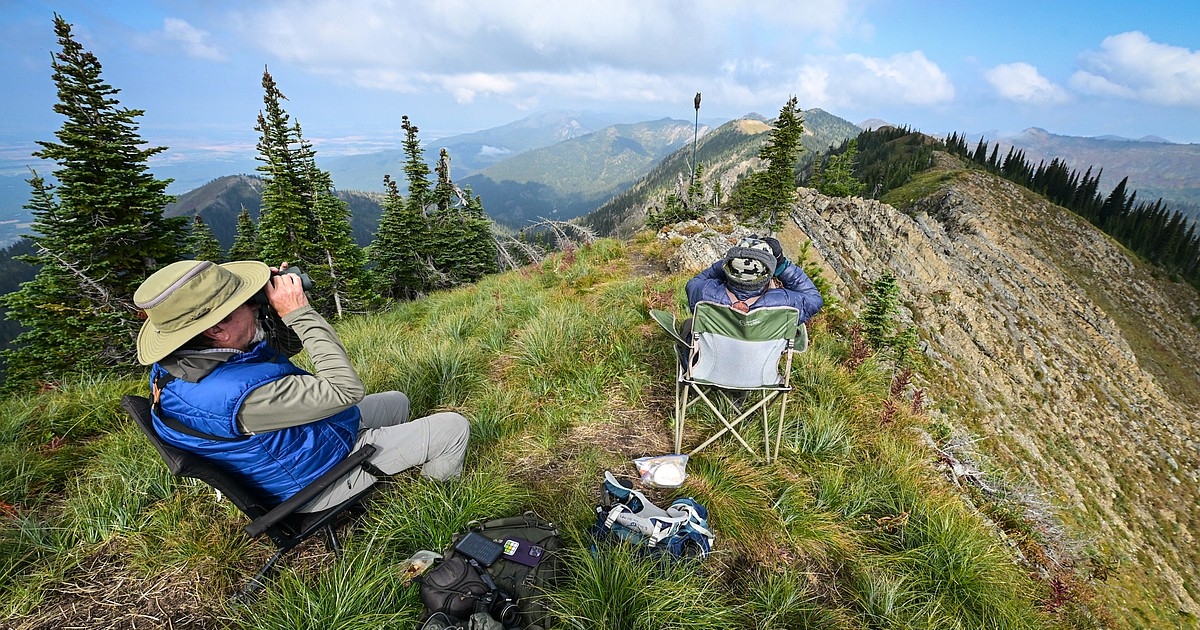Description
In the dark of night, a kayak glides along the shoreline. Headlamps cut through the darkness and reflect their beams off two emerald-green eyes of an American Bullfrog.
As the light freezes the frog in place, the Montana Conservation Corps crew draws their spears. A quick thrust pierces the frog’s head. This practice, known as frog gigging, is the most common hunting approach for the MCC fellows, who are the manpower of the Invasive Bullfrog Project.
“Of course, lethal removal is not the most fun. It's a little bittersweet, but it's all for the benefit of native wildlife species,” said MCC fellow Amanda Emmel.
American Bullfrogs are listed in the top 100 worst invasive species because of their high repopulation rate and predatory nature. They breed three times a year and lay up to 20,000 eggs compared to native frogs, which lay 7,000 eggs or fewer.
“They're bigger, they're tougher and they can not only eat the native species themselves, but they eat their food. They can be highly cannibalistic,” said Cara Thompson, a wildlife biologist with the Confederated Salish and Kootenai Tribes. “They can eat baby ducks, literally anything that fits in their mouth, they'll eat. They can really take a toll on biodiversity.”
The Invasive Bullfrog Project is a collaborative partnership between the CSKT Wildlife Management Program, Montana Fish, Wildlife & Parks and MCC. Its goal is to reduce and manage the bullfrog population in Mission Valley.
American Bullfrogs are native to the central and eastern United States but have been documented in the lower Flathead River since the 1960s.
Thompson said these frogs weren’t common until the 1990s, and there are several theories about how they were introduced to the valley. One possibility: a child picked one up from the river for a frog race or as a pet, then released it into an irrigation canal, where the species spread.
“It’s really important … don't put animals in a different place than you found it,” Thompson said.
Stopping the spread
Their invasion spread across private ponds in Charlo, Horte Reservoir, northwest of Ronan, and other private ponds near Round Butte. The goal of the bullfrog project, which was created in 2021, is to prevent bullfrogs from establishing in irrigation reservoirs and migrating into new wetlands.
Paul Toussaint, a landowner near Charlo, has welcomed the crew since the project started. The small pond on his property, which used to connect to irrigation canals, is the breeding ground for bullfrogs. He supports the project because, he says, frogs aren’t native and don’t belong in the Mission Valley.
“I think it’s very important for landowners to take a very careful look at their property and use the supportive wildlife program we have,” said Toussaint. “The tribal project partnered with FWP is a great project. The support of the community is what makes it successful.”
Emmel explained that although bull frogs have not been detected in Crow Reservoir or in Kicking Horse yet, a handful of frogs have made it into Ninepipe Reservoir, but previous crews have removed them.
“Keeping them from establishing populations and breeding in these reservoirs is a main goal of this project, since it would be virtually impossible to remove them once the main irrigation reservoirs distribute them throughout the entire valley’s irrigation system,” Emmel said.
Bullfrogs are established in the Little Bitterroot and Lower Flathead rivers, but Thompson said removal there is difficult because of flowing water and depth. From May through early October, MCC crews gig frogs, net tadpoles and remove egg masses.
The MMC manpower was challenged this year when the program didn’t have enough funding for wages. Thompson said a private donor stepped up, and the project is looking for new funding paths for next year.
Emmel said the crew is smaller this year with about six or seven people and is focusing on community outreach. The project has had several volunteers from MCC and the Big Sky Watershed Corps join them to help with removal efforts. The crew has also invited their family members and friends to gig along.
Thompson said anyone can gig for invasive American Bullfrogs if they have a CSKT Conservation Permit, a frog gig and a headlamp. She explained frog gigs can be ordered online or found at Walmart and having a kayak is useful for navigating the muddy shorelines.
For more information or to report bullfrog sightings, email [email protected].
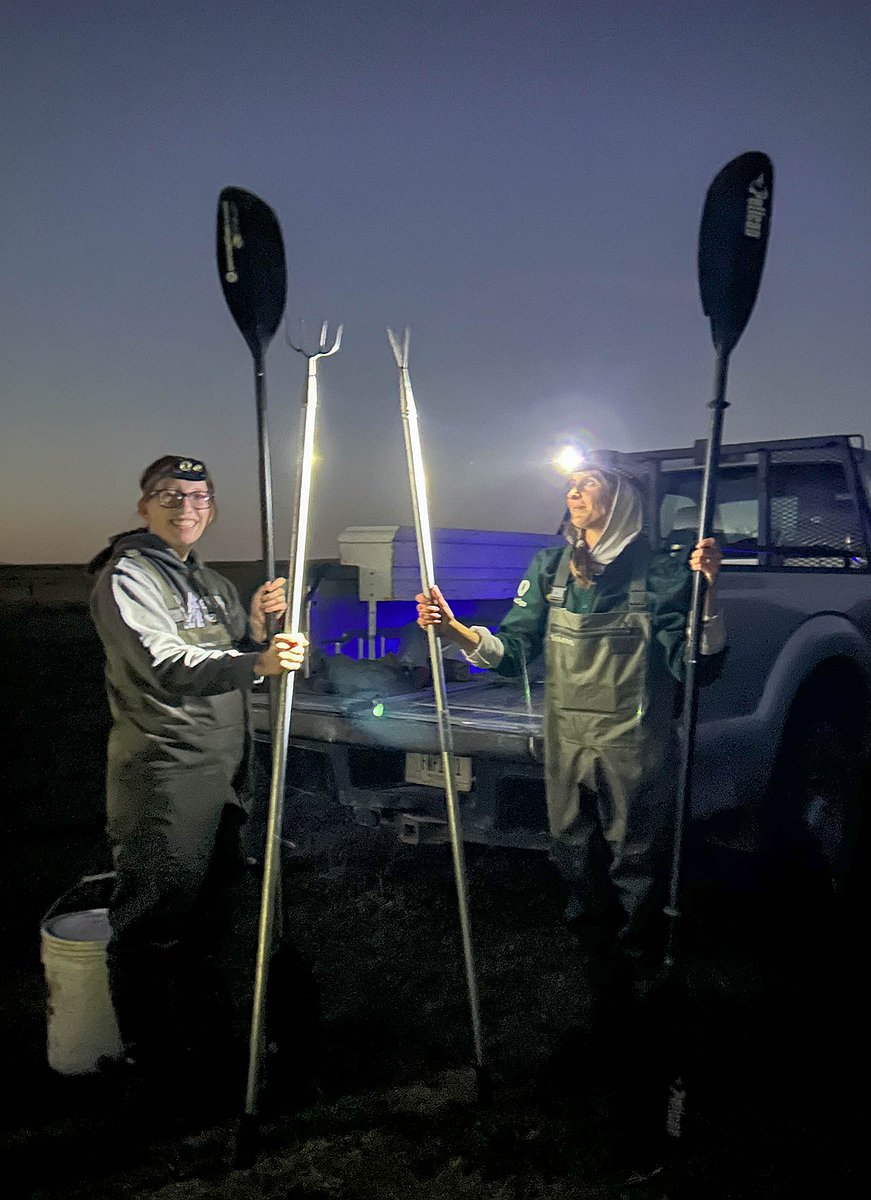 Brianna Rentschler and Amanda Emmel hold their frog gigs and paddles. They each take kayaks out onto the water and will spear bullfrogs as they see them. (Emily Messer/Leader)
Brianna Rentschler and Amanda Emmel hold their frog gigs and paddles. They each take kayaks out onto the water and will spear bullfrogs as they see them. (Emily Messer/Leader)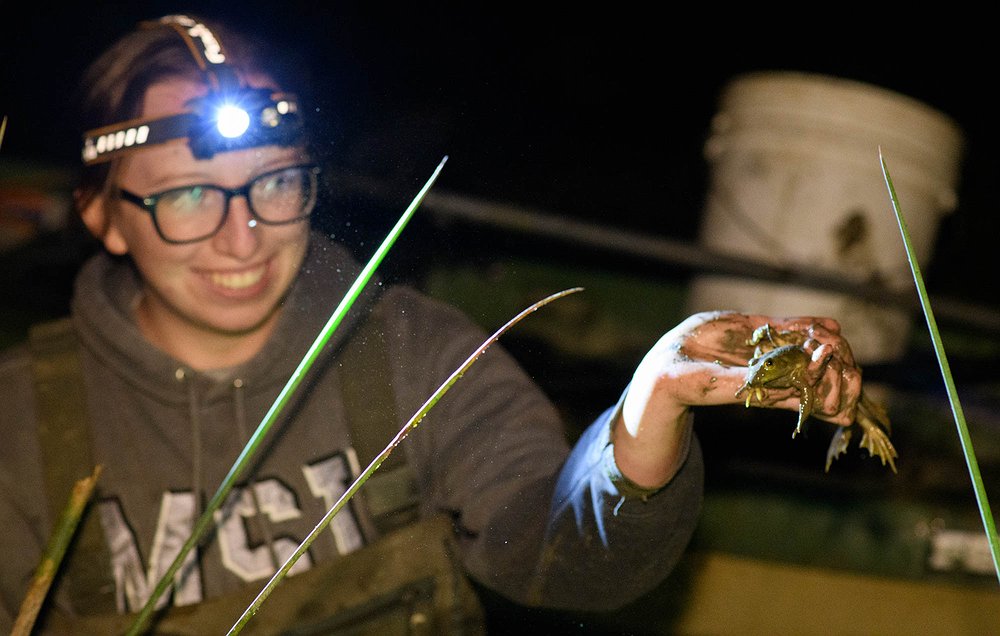 Brianna Rentschler shows off a muddy bullfrog she hand caught. During this cold night the bullfrogs were slow moving and easy to catch by hand. (Emily Messer/Leader)
Brianna Rentschler shows off a muddy bullfrog she hand caught. During this cold night the bullfrogs were slow moving and easy to catch by hand. (Emily Messer/Leader)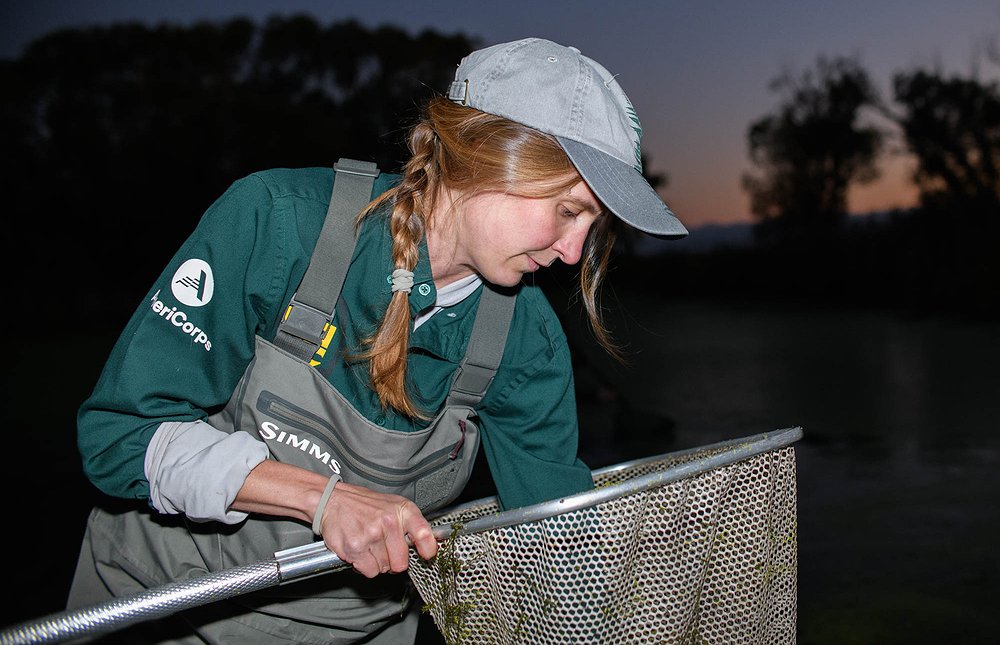 Montana Conservation Corp fellow Amanda Emmel removes tadpoles from the net. The tadpoles are then moved into a bucket of benzocaine solution, which euthanizes the tadpoles and frogs. (Emily Messer/Leader)
Montana Conservation Corp fellow Amanda Emmel removes tadpoles from the net. The tadpoles are then moved into a bucket of benzocaine solution, which euthanizes the tadpoles and frogs. (Emily Messer/Leader)
News Source : https://dailyinterlake.com/news/2025/oct/19/the-invasive-chorus-of-american-bullfrogs-in-missi/
Other Related News
10/19/2025
When Carolyn Rutherford began teaching in 1996 she wanted to help people live better live...
10/19/2025
Detention officers stood alert next to an open cell in the jails medical wing Tasers read...
10/19/2025
Filming has taken place in Western Montana for a new short film backed by the Montana Big...
10/19/2025
Dan Casey saw the bird first shimmering against the distant horizon like a desert mirage ...
10/19/2025


